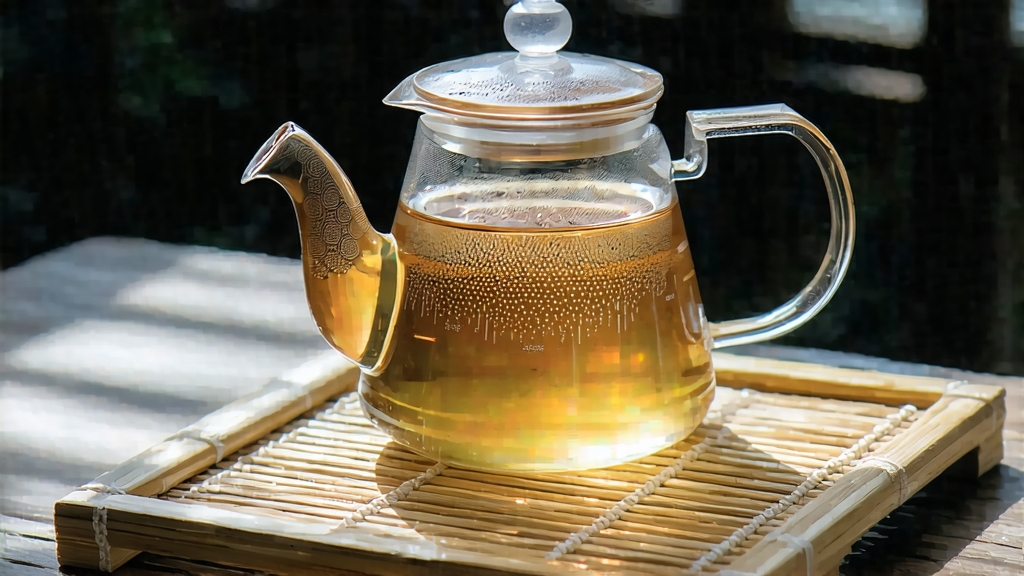
White Hair Silver Needle—Bai Hao Yin Zhen in Mandarin—is the most aristocratic expression of Chinese white tea. To the uninitiated it may look like a handful of dried pine needles, yet once water meets leaf the liquor glows like early dawn and smells of fresh rain on hay. International tea circles often praise the grandeur of Keemun or the punch of Pu-erh, but Silver Needle whispers; its power lies in restraint. This article invites you to listen to that whisper, tracing the cultivar’s history, terroir, craftsmanship, and the quiet ritual that turns a glass of hot water into moonlight.
-
A History Written in Down
The first verifiable record of “silver needle” appears in the Song dynasty tax scrolls of 1064 CE, when Fujian province sent “xian hao” (first down) as tribute to the imperial court. The name Bai Hao Yin Zhen was formalised during the Qing Qianlong reign (1736-1795) when Song Luo Mountain in Fuding county became the exclusive picking ground for the emperor’s spring tea. Legends say only virginal girls were allowed to pluck before sunrise, storing buds in their silk sleeves to prevent bruising. While the social subtext of that rule has rightly been abandoned, the image captures the cultural reverence for intact, unopened tips—still the non-negotiable standard today. -
Terroir: Where Ocean Mist Meets Volcanic Soil
Authentic Silver Needle comes from three micro-zones in northern Fujian: Fuding, Zhenghe, and Jianyang. Each offers a slightly different personality. Fuding’s coastal proximity brings maritime fog that slows photosynthesis, concentrating amino acids and giving the famous cool-melon sweetness. Zhenghe sits at higher elevation; wider day-night temperature amplitude heightens floral terpenes, so cups from here often hint at orchid. Jianyang’s red granitic soils yield a sturdier body and longer aftertaste. In all three areas only two cultivars are legally recognised for authentic Yin Zhen: Fuding Da Bai (Big White) and Zhenghe Da Bai. Their buds can reach 3.5 cm in early spring, each cloaked in a duvet of protective trichomes that shimmer like frost. -
The Craft of “Two Dries and One Cool”
Unlike green tea that kills-green with fierce heat, white tea is defined by what it refuses to do: no pan-firing, no rolling, no high-temperature fixation. The process is disarmingly simple on paper, mercilessly difficult in practice.
Step 1: Plucking—only the unopened terminal bud, no leaf, no stem, before 10 a.m. when dew still lingers. A skilled picker gathers roughly 2,000 buds per hour; 30,000 buds equal one finished kilogram.
Step 2: Withering—48 to 60 hours spread on bamboo racks in a drafty pavilion. Ambient humidity 65-75%, temperature 22-26°C. The goal is to let moisture leave the cells slowly so oxidative enzymes remain active yet gentle, painting the quiet honey note that distinguishes white tea from any other category. Every two hours the tea master flips the buds by hand, feeling for suppleness; under-withering traps grassiness, over-withering flattens aroma.
Step 3: Slow Baking—final moisture is reduced to 5% using charcoal embers no hotter than 40°C. The bake lasts less than ten minutes, just enough to stabilise the leaf for storage without caramelising sugars. The result is a bud that has lost 70% of its weight yet preserved 95% of its antioxidant catechins.
- Grades and Ageing Potential
Chinese export standards divide Silver Needle into two grades: Special Grade (≥2.5 cm bud length, 90% intact tips) and Grade 1. Within Special Grade, connoisseurs further separate “tribute” lots picked in the first three days of Qingming festival from later spring pickings. Like raw Pu-erh, Silver Needle can be cellared. Over years the chlorophyll quietly degrades, silver fuzz turns oatmeal beige, and the flavour migrates from crisp pear to dried apricot, then to longan and finally to dark honey with a camphor coolness. A 2012